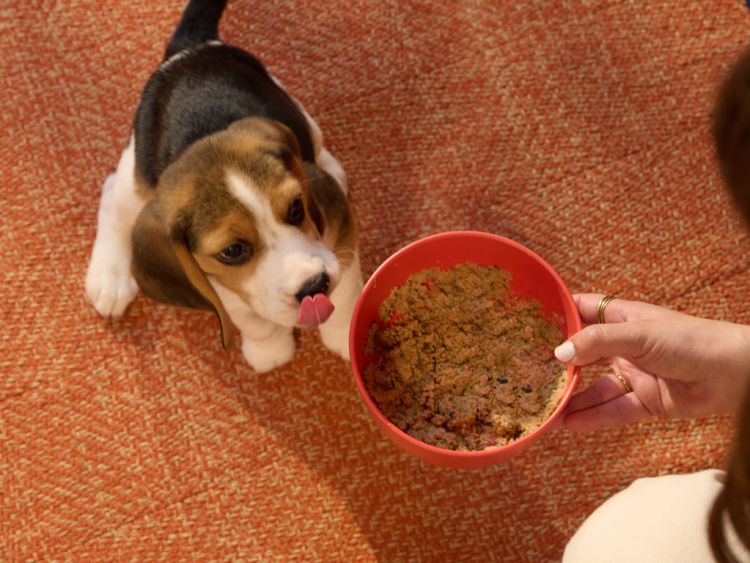Choosing the right diet for your pet is one of the most essential components of their overall well-being. Just like humans, pets have specific nutritional needs based on their life stage, health conditions, and activity levels. Selecting an appropriate diet for your pet’s age and health can help prevent a wide range of health issues and ensure that your pet lives a long, happy, and active life. This article delves into the importance of age-appropriate nutrition, the impact of health conditions on diet choices, and recommended feeding guidelines for pets in various life stages.
Importance of Age-Appropriate Nutrition
Each stage of a pet’s life—puppy or kitten, adult, and senior—comes with its own unique set of nutritional requirements. These needs are influenced by factors such as growth rate, metabolism, activity level, and overall health. Proper nutrition supports the body’s development, maintains energy levels, and prevents chronic diseases.
1. Puppy and Kitten Nutrition
Puppies and kittens are in their formative years, which are marked by rapid growth and development. At this stage, their nutritional requirements are much higher than those of an adult pet. They need a diet that supports bone and muscle growth, immune system development, and healthy brain function. Protein and fat content in their food should be higher to fuel these growth processes.
Puppies, for instance, require a diet that contains about 20-30% protein, depending on their breed size. Larger breeds generally need more protein and fat to support their quicker growth. Kittens, on the other hand, require a diet rich in protein (around 30-40%) for their energy needs and growth. Omega-3 and Omega-6 fatty acids are also crucial for brain development.
In addition to a higher protein and fat content, puppies and kittens need more frequent meals to ensure proper growth. Typically, they should eat three to four times a day.
2. Adult Pet Nutrition
Once a pet reaches adulthood, their growth slows down, and their nutritional needs change. Although adult pets still require protein to maintain lean muscle mass, the amount should be less than in their younger years. The focus now shifts to maintaining a healthy weight and energy levels. Adult pets typically require a diet with 18-30% protein, depending on their activity level.
Fats should be moderated to prevent obesity, which can be a common issue in adult pets. The calorie content of adult pet food should also be balanced to avoid overfeeding, which can lead to weight gain and related health problems. Many adult pets are less active than when they were younger, so adjusting their calorie intake becomes essential.
Diet is also important for maintaining overall health, including skin and coat condition, digestion, and joint health. Adding Omega-3 fatty acids, prebiotics, and probiotics to the diet can promote a shiny coat, improve digestive health, and support joint function, especially in larger breeds prone to joint issues like arthritis.
3. Senior Pet Nutrition
As pets age, their metabolism slows down, and they may face health problems such as arthritis, kidney disease, and dental issues. Senior pets need a diet tailored to their unique needs. The first adjustment for senior pets is often a reduction in calories to prevent obesity, which is a common concern for aging animals. Many senior diets are lower in fat but still high in protein to preserve muscle mass, which tends to decline with age.
Senior pets are also more prone to dehydration due to reduced kidney function, so it’s crucial to ensure they have access to plenty of fresh water. Wet food can be beneficial for senior pets, as it contains more moisture than dry food. Some pet foods designed for older animals contain joint-supporting ingredients like glucosamine and chondroitin, which help maintain cartilage and prevent the development of arthritis.
Digestive health also becomes a priority for senior pets, as they may experience slower digestion or gastrointestinal issues. Foods with easily digestible ingredients, fiber, and prebiotics can aid in maintaining proper digestive function. Additionally, antioxidants such as vitamins E and C help combat the aging effects of oxidative stress and support a healthy immune system.
The Impact of Health Conditions on Diet Choices
Beyond age, a pet’s health status can greatly influence the type of food they need. Specific health conditions often require tailored diets to manage symptoms and improve quality of life.
1. Obesity
Obesity is a growing concern among pets, especially in pets that are spayed or neutered, or those who are less active. Overfeeding and lack of exercise can lead to significant weight gain, which in turn increases the risk of other conditions like diabetes, arthritis, and heart disease. To combat obesity, many pet foods are available that are lower in calories but still offer balanced nutrition. These weight management formulas typically contain higher fiber content to help pets feel full longer without consuming excessive calories.
If your pet is obese, it’s crucial to work with your veterinarian to develop a personalized weight-loss plan. This may involve feeding them lower-calorie food, controlling portion sizes, and increasing exercise.
2. Allergies and Sensitivities
Food allergies and sensitivities are common in both dogs and cats. Symptoms include vomiting, diarrhea, itching, and skin infections. Common allergens include grains, dairy, beef, and chicken. If you suspect your pet has food allergies, it’s best to consult your veterinarian for a proper diagnosis and treatment plan.
Hypoallergenic foods, which use novel protein sources like lamb or duck, are often recommended for pets with food allergies. Limited ingredient diets (LID) can also help identify and avoid specific allergens. Additionally, grain-free foods are available for pets with sensitivities to grains.
3. Diabetes
Pets with diabetes require a diet that helps manage their blood sugar levels. These pets often need foods that are low in simple carbohydrates and high in fiber to stabilize glucose levels. Some diabetic pet foods are designed with complex carbohydrates and include added fiber to slow the absorption of glucose into the bloodstream.
It’s essential to feed diabetic pets on a consistent schedule to prevent spikes or drops in their blood sugar levels. Regular monitoring of your pet’s blood sugar and coordination with your vet is key to managing diabetes successfully.

4. Kidney Disease
Kidney disease is common in older pets, particularly cats. Pets with kidney disease require a diet that is low in phosphorus and protein to reduce kidney strain. However, protein must not be reduced too drastically, as pets still need enough to maintain muscle mass. Special prescription diets for kidney disease often contain antioxidants and Omega-3 fatty acids to help support kidney function.
For pets with kidney disease, it’s essential to work closely with your veterinarian to manage their dietary needs and ensure they maintain a healthy weight and optimal hydration levels.
5. Heart Disease
Pets with heart disease often require diets that are low in sodium to reduce the strain on their heart and kidneys. Heart-healthy foods typically contain increased levels of Omega-3 fatty acids, which can help reduce inflammation and support cardiovascular health. Pets with heart disease may also need extra support from specific nutrients such as taurine, an amino acid important for heart health.
Recommended Feeding Guides for Different Life Stages
To ensure that your pet receives optimal nutrition, it’s essential to follow feeding guidelines based on their life stage and individual health needs. Below are general guidelines to help you make informed decisions about your pet’s diet.
Puppy and Kitten Feeding Guide
- Frequency: 3-4 meals per day
- Food Type: High in protein and fat, designed for growth
- Portion Size: Follow the manufacturer’s guidelines or consult a vet for portion control, especially for larger breeds.
- Special Considerations: Ensure the food is balanced with the right levels of calcium and phosphorus for bone development.
Adult Pet Feeding Guide
- Frequency: 1-2 meals per day
- Food Type: Balanced with moderate protein and fat to maintain weight and muscle
- Portion Size: Adjust based on activity level, size, and breed
- Special Considerations: Monitor for signs of obesity or underweight, and adjust food intake as necessary.
Senior Pet Feeding Guide
- Frequency: 1-2 meals per day (some senior pets may prefer smaller, more frequent meals)
- Food Type: Lower calorie, high-protein, and added joint-supporting nutrients
- Portion Size: Adjust to prevent obesity; ensure the pet maintains a healthy weight
- Special Considerations: Choose foods with high moisture content and consider adding supplements for joint health and cognitive function.
Conclusion
Choosing the right diet for your pet is a critical aspect of ensuring they lead a healthy and fulfilling life. As pets age and their health needs change, it’s essential to adjust their nutrition to meet those evolving requirements. Regular consultation with your veterinarian and a tailored diet plan can help keep your pet in the best possible health at every stage of life. By offering the right balance of nutrients, you can support your pet’s growth, maintain their energy levels, and prevent or manage any health conditions they may face.























































